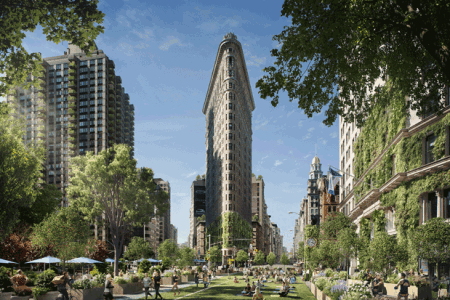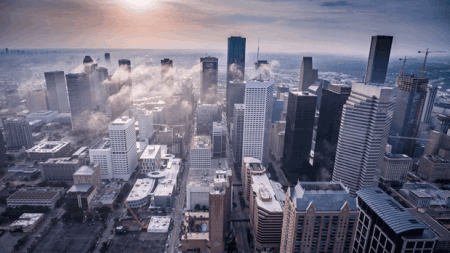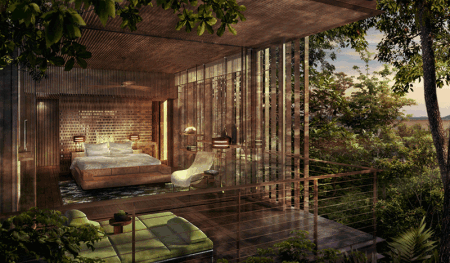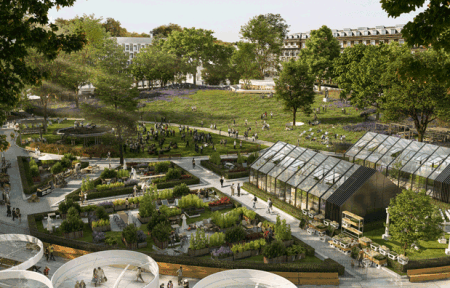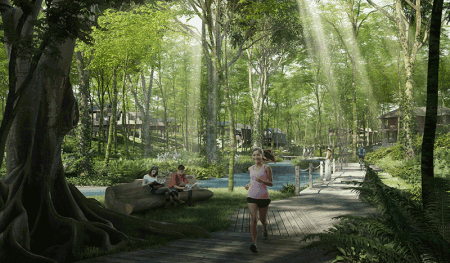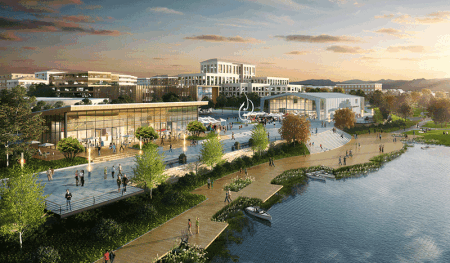While it is still too early to gauge the COVID-19 pandemic’s permanent impact on urban spaces, there is no denying that the past 18 months have encouraged everyone to reconsider his or her relationship with the look, feel, and function of the places where we live, work, and play.
WATG’s master planners and landscape architects share their predictions for the future of our cities, from greater emphasis on mental health to the end of single-use zoning, the evolution of the home, and more.
Stronger Connections between Nature and Humankind
For me, it is all about the connection between urban design and improving mental health. We have been working with a specialist, psychologist Audrey Tang, on this for a number of years now. This bond will only become stronger, especially in cities, as we try to stem the pandemic of mental health impacts the pandemic has had on people.
Learning from Houston . . . Finally
Houston, Texas, is one of the few U.S. cities without a strong zoning and land use law tradition. Building codes apply, of course, but the “single-use zoning” so evident in other communities is almost entirely absent. As a result, vibrant, mixed-use neighborhoods have developed over time in many places that were originally built for a single purpose. Neighborhoods like Montrose permit bars, coffee shops, and hairdressers to operate in former single-family homes. The resulting vibrancy, flexibility, and inventiveness is what COVID will hopefully bring to other cities around the world.
A reassessment of zoning and development regulations overall is what I predict will be the longer-term impact of the pandemic: how we define the “Good City” and how to ensure it can be developed in appropriate regulatory environments.
Increased Appreciation of Space and Open Spaces, Especially at Home
Urban apartments are becoming smaller and smaller: kitchenettes, fewer bathrooms, minimal storage, and almost definitely no balcony. As we reevaluate the hours spent at home, and our relationship with space both indoors and out, this narrative is shifting from saving space to making it more flexible. Allowing units to be combined to create larger homes, and bringing back the balcony and storage room, will be in.
Outside, we’re seeing similar trends. We have seen just how important open spaces are, especially when people do not want to venture too far or are permitted from doing so. Singapore does a great job at this where parks and open spaces are at every level/hierarchy, including individual communities.
Neither of these trends are particularly new, but I do believe they will lead to:
- A shift in the idea of a “home” in a city, irrespective of the demographic/family type.
- Even more importance placed on open spaces and their treatment within cities.
Flexibility and the Many Faces of Outdoor Space
Daycations and other flexible outdoor experiences are becoming increasingly popular. Opening an apartment or hotel’s facilities and pools, water play and private beaches to the public (and thus, of course, creating new revenue streams) will continue to be big in 2022. In Asia Pacific, this trend is booming–especially among couples and families who would rather escape for a day instead of packing up and spending the night.
Our new reliance on the outdoors and desire to escape will also have an impact on how urban public spaces are used. As people come to appreciate the mental and physical health benefits of being outdoors more and more, picnicking and dining in parks will likely continue. And, if Singapore is anything to go by, the uptick in people will also see an uptick in hospitality businesses around the perimeters of green or public space.
A Move to More Innovative Movement
People’s retreat from public transport (and, indeed, public life, at times) saw a rise in cycling and alternative transport means in 2020 and 2021, and I suspect that will only continue to gain momentum. What that means: designing for people and the planet, not cars (driven or driverless). Innovative transportation and alternative solutions will be essential to future-proofed cities.
Additionally, the competition between cities (locally and internationally) to attract investment, business and residents will become even more fierce. Besides tax breaks, some of the deciding factors for people making the move relate to the safe, healthy and resilient public spaces and leisure and recreational amenities these cities offer, as well as the associated lifestyle they promote.
Local Experiences, Eco-townships, and Public Transport
I see three major trends ahead–none of which are new, but all have gained significant momentum since the global shutdown in 2020. First, is the continued focus on domestic tourism and second-home ownership as people seek new local experiences and destinations. Second, is more emphasis on eco-friendly and sustainable practices and places when it comes to new townships and urban areas–especially in Southeast Asia. Third, we’ll see increased importance placed on effective public transit systems: more inclusive and resilient and designed to meet the needs of their passengers.
CHRIS PANFIL, is vice president, director of planning and urban design, WATG.

